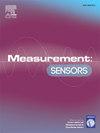Research on data processing methods for intelligent testing system of automatic instrument for weighing road vehicles in motion
Q4 Engineering
引用次数: 0
Abstract
This article is based on the intelligent testing system, and studies the collection status parameter analysis, classification rules and processing methods of abnormal weighing data of Automatic Instrument for Weighing Road Vehicles in Motion, hereinafter referred to as “WIM instrument”, collected online. The system collects weighing data of WIM instrument online, records the operating status parameters of the weighing equipment at the time of data generation, such as vehicle acceleration, output of each weighing sensor, etc. Firstly, combining the data tolerance range and statistical theory methods specified in the metrological technical specifications JJG907-2006, OIML R 134–1, etc., the data is analysed as a whole and anomalies are identified to form an anomaly dataset. Then, based on the abnormal weighing data collected from the Internet of Things, including the operating status parameters, historical verification status, fuel consumption, etc. of the vehicle, the abnormal weighing data is further classified into two categories: abnormal driving weighing data and normal driving abnormal weighing data. Then, the abnormal data is removed for supplementary verification or corrected according to the abnormal driving correction rules to improve the effectiveness of intelligent verification date.
道路车辆自动称重智能测试系统数据处理方法研究
本文以智能测试系统为基础,研究在线采集的道路行驶车辆自动称重仪(以下简称“WIM仪”)异常称重数据的采集状态参数分析、分类规则及处理方法。该系统在线采集WIM仪表的称重数据,记录数据产生时称重设备的运行状态参数,如车辆加速度、各称重传感器输出等。首先,结合计量技术规范JJG907-2006、OIML R 134-1等规定的数据容差范围和统计理论方法,对数据进行整体分析,识别异常,形成异常数据集。然后,基于物联网采集的异常称重数据,包括车辆的运行状态参数、历史验证状态、油耗等,将异常称重数据进一步分为异常驾驶称重数据和正常驾驶异常称重数据两类。然后,将异常数据剔除补充验证或根据异常驾驶校正规则进行校正,提高智能验证数据的有效性。
本文章由计算机程序翻译,如有差异,请以英文原文为准。
求助全文
约1分钟内获得全文
求助全文
来源期刊

Measurement Sensors
Engineering-Industrial and Manufacturing Engineering
CiteScore
3.10
自引率
0.00%
发文量
184
审稿时长
56 days
 求助内容:
求助内容: 应助结果提醒方式:
应助结果提醒方式:


